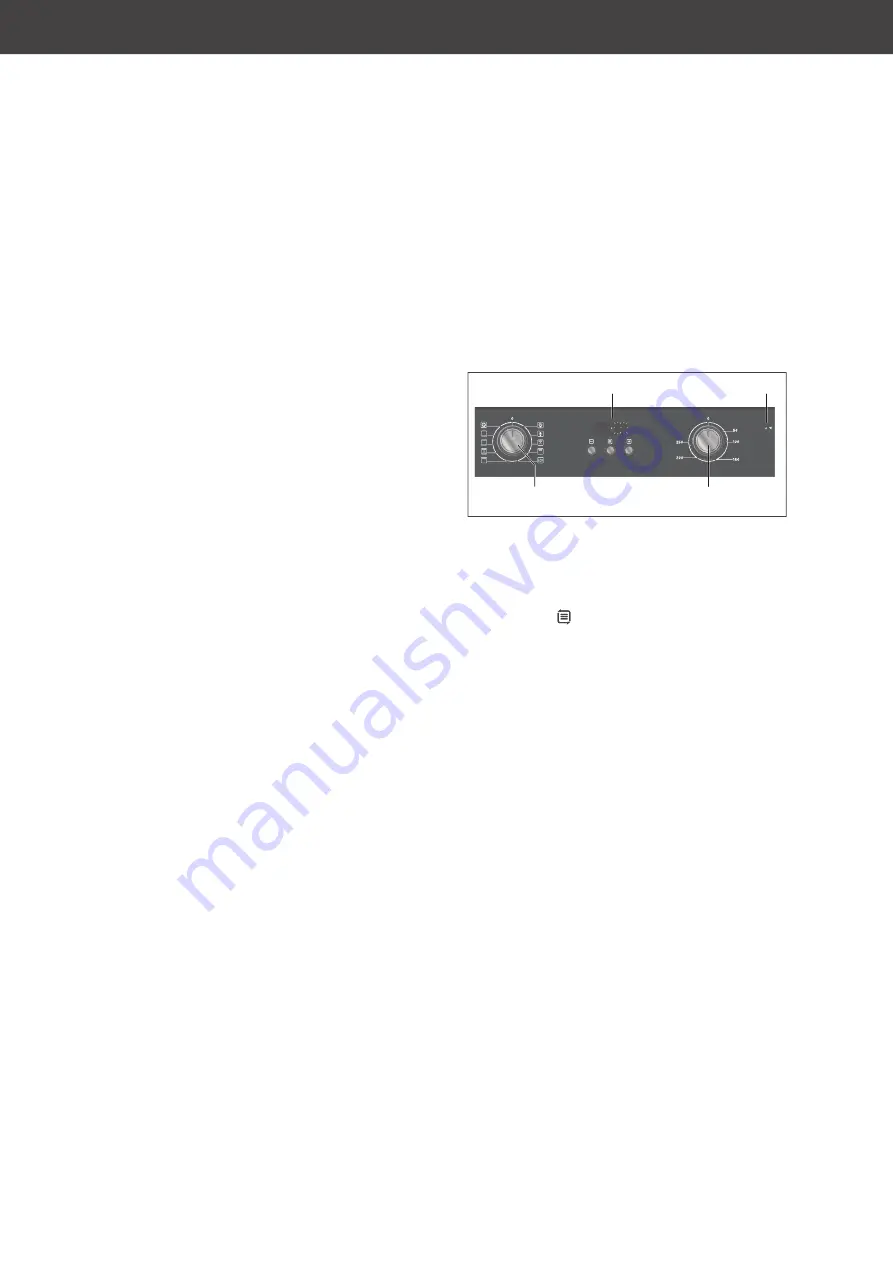
Page EN-16
Operation
Convection and hot air
Your oven operates with hot air. A fan on the
back wall of your oven makes sure that heat
is distributed evenly.
Convection with top and bottom
heat
The heat is produced by top/bottom heat and
is distributed evenly by the fan.
Convection is ideal for short-roasted dishes
such as chicken pieces, chops or fish and
to grill sandwiches or similar with more than
6 portions. This has many benefits:
– Pre-heating is usually redundant.
– The oven temperatures are lower than with
top/bottom heat.
– Two levels can be used for baking, roasting
or steaming at the same time.
– This all saves electricity, money and time.
Hot air
Additional heat is produced by a ring heater
around the fan.
Baking
Please note!
– Only fill the dough 2/3 of the way up the
baking tin, otherwise the dough will over-
flow and drip into the oven when baking.
– Place the baking tin on the middle of the
oven rack if possible.
– The best results for cakes are achieved
with dark ovenware.
– Shelf height, temperature and baking time
as well as the choice of ovenware all de-
pend on what you want to bake:
– Flat cakes, e.g. tarts, on the baking tray
on the middle bar at approx. 170–180 °C;
– Half-height cakes, e.g. sponge cakes,
on the oven rack on the middle bar at
approx. 180 °C;
– Tall cakes, e.g. pound cakes, in the tin
on the lower bar at approx. 175 °C.
– Selecting ovenware for baking with con-
vection is not too important. Cakes will
turn out the same in light baking tins.
1. Slide the baking tin into the oven on the
oven rack or baking tray.
2. Close the cooking compartment door.
88 88
A
8 30
(9)
(14)
(15)
(17)
3. Use the left toggle switch (9) to set the
desired heating method.
4. Use the right toggle switch (14) to set the
temperature.
5. Press the button (11).
The power indicator (17) and temperature
indicator light (15) will light up.
Roasting
Our tips for roasting:
– Roast cured meats, e.g. cured pork, only
at low temperatures. Otherwise the nitrate
in pickling salt forms nitrosamines that are
harmful to humans.
– It is best to cook frozen meat in a closed
pot. Plan approx. 4 to 5 minutes cooking
time for every centimetre of height.
– Roasts weighing more than 1 kilogram are
best cooked in the oven. Use the right dish-
es and a little water/oil to cook; this helps to
preserve the vitamins.
– The roast will rise during cooking. Make
sure the shelf is high enough for very high
temperatures.
– Meat with bones takes around 15–30 min-
utes longer to cook than a similar roast
without bones.
















































